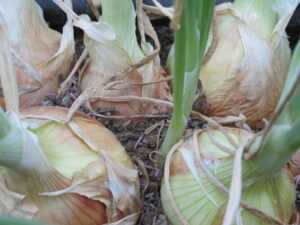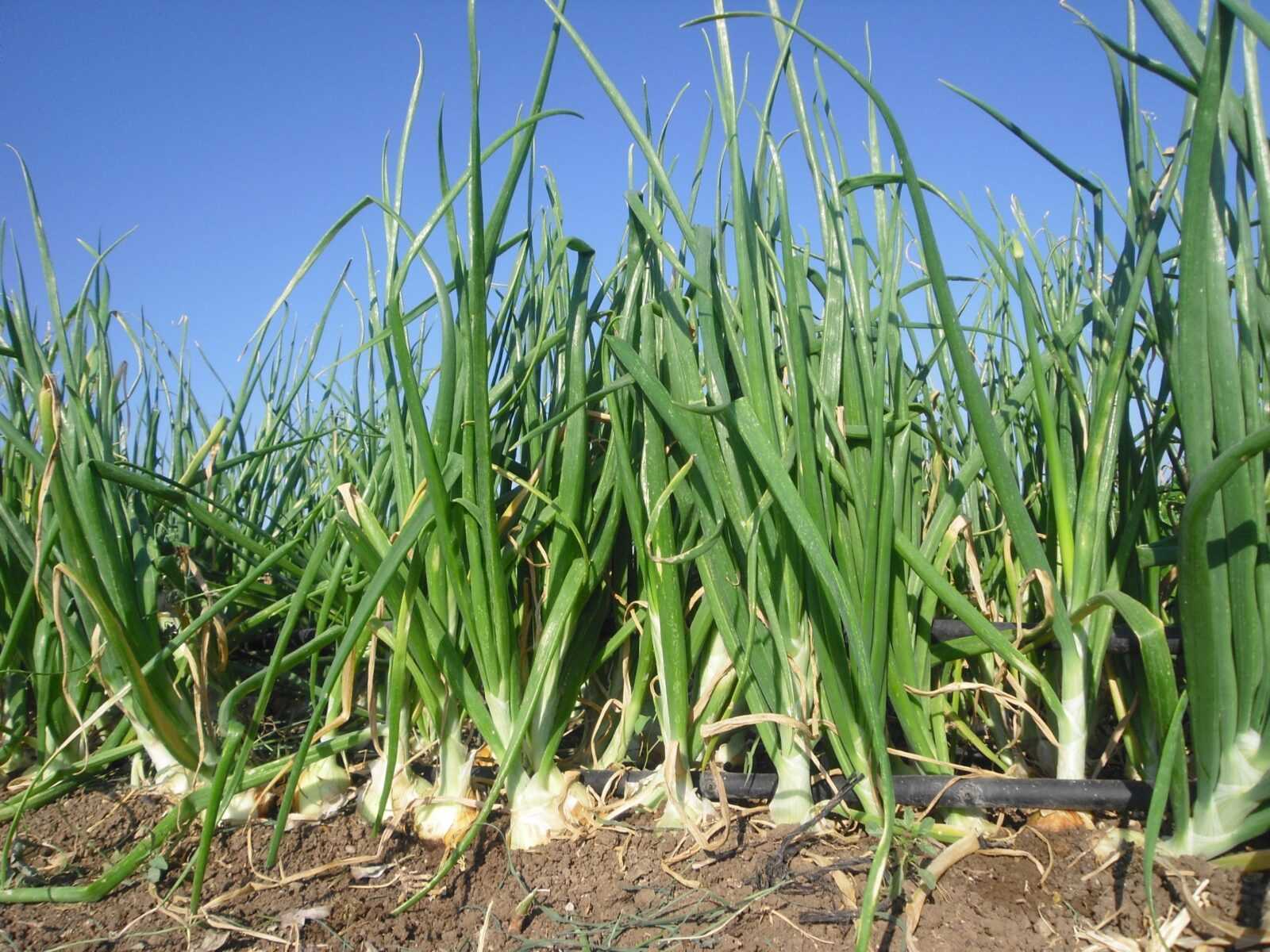The Onion
by Wislawa Szymborska
The onion, now that’s something else
its innards don’t exist
nothing but pure onionhood
fills this devout onionist
oniony on the inside
onionesque it appears
it follows its own daimonion
without our human tears
our skin is just a coverup
for the land where none dare to go
an internal inferno
the anathema of anatomy
in an onion there’s only onion
from its top to its toe
onionymous monomania
unanimous omninudity
at peace, at peace
internally at rest
inside it, there’s a smaller one
of undiminished worth
the second holds a third one
the third contains a fourth
a centripetal fugue
polypony compressed
nature’s rotundest tummy
its greatest success story
the onion drapes itself in its
own aureoles of glory
we hold veins, nerves, and fat
secretions’ secret sections
not for us such idiotic
onionoid perfections.
Copyright ©:
Translated by Stanislaw Baranczak and Clare Cavanagh
________________________________________________________
In the difficult times we now face, as my soul is tormented and pained, I gaze frequently upon the vegetables growing peacefully and indifferently in the field. Amidst all the human upheavals, they continue to do what they know and always do – grow, thicken, take root, photosynthesize, bloom, yield and wither. The simplicity of nature offers me a measure of stability, which we’ll try to send your way as well. May it bring you a measure of comfort!
The onion is a fundamental vegetable in our kitchen, our culture and probably in human existence. We attribute to it an inner essence cloaked in hiding, associate it with tears and sorrow, courage, audacity and eternal life. And on the other hand – simplicity, the elementary basics of the common people. Of course, the onion has no clue of this. He’s totally indifferent to the big fuss, absorbed in tending to his own growth, making every effort to just be… well, an onion… Throughout the year, you meet three members of this family in your Chubeza box: the dry onion, which is already harvested in the summer and kept for months in dry storage, as well as the scallions and the leeks, which are harvested in the field when green and fresh.
Over the last two months, you’ve accompanied us on the onion’s ripening journey. Initially, we picked onions in bunches still attached to their green shoots (in this state we call them “moist onions.”) During the last few weeks, the green shoots have already dried, but the onion bulb – now called a “fresh onion” – has not yet grown thick skin. Later, as the drying process progresses in the field, the onion will develop skin that will protect it over the long run, enabling it to remain preserved for several months.

The onion and its cousins are among the most ancient cultivated plants. Onions originated in Western Asia, and there is even evidence that they were raised in ancient Egypt. The Israelites fleeing Egypt craved it most when they met hardships, whining, “We remember the fish we ate in Egypt at no cost–also the … onions and garlic.” In ancient Egypt, onions received special treatment, posing as models in Egyptian art and acting as offerings for the gods, in addition to being a basic staple of the common folk. For the Egyptians, the revered onion with its many layers represented eternal life, and was thus placed in the tombs of the pharaohs. Traces of small onions were found in the eye sockets of Ramesses IV, while a basket of onions was considered an accepted, respected funeral offering.
Conflict has always existed between the onion’s pungent odor and its taste. The aristocracy pinched their noses at the odor (but devoured the tasty onion nonetheless), while in India the Brahmins abstained as the common people consumed it greedily. Hammurabi’s Code notes a monthly allocation of onion and bread for the needy. Alexander the Great viewed the sharp fumes of the onion as a sign of its power. An enthusiastic proponent of the “you-are-what-you-eat” school of warfare, he fed his warriors a steady diet of pungent onions to fortify their strength and courage. (Perhaps this was another reason the enemies fled his army…)
Our very own national poet Hayim Nahman Bialik sings the onion’s praises in his famous composition Knight of Onions and Knight of Garlic, as being the ultimate element to spice up a meal.
The onion is a geophyte (a bulb with underground storage organs which hold energy and water). To form the bulb, the common onion – like the garlic – needs long light-filled days, thus in Israel it is seeded in the winter and thickens its bulbs as the days grow longer. Young onions can be planted in autumn and harvested as mature onions in wintertime, or sown in the winter and harvested in the summer. The scallion and leek, however, have no intention of thickening their bulbs, thus they can be planted or seeded year-round and devoured fresh and green with no storage. As noted, some of the onions we plant, but do not sow. Although the seedlings are more expensive to purchase, or more labor intensive if we prepare them ourselves, they hold many advantages: The first is related to dealing with weeds: the onion and the leek do not develop broad foliage, thus weeds adore their bed and thrive on grabbing generous portions of sun near them. If you plant them (the seedlings come from the nursery as thin green onion shoots), you can get slightly ahead of the weeds. Planting (as opposed to seeding) enables the plants to be precisely spaced, allowing the onion a better growth process and sparing us the task of thinning the crop. Planting eliminates certain difficulties of seeding, especially during wintertime when sprouting is harder and seeds can be washed away by heavy showers.
The onion has always been a prime component in natural medicine. It serves as an excellent source of Vitamins C and B1, chromium and dietary fibers. The organosulfur compounds (for example, allicin, an anti-infective agent unique to members of the onion family), also grant the onion its powerful healing powers, as does the quercetin antioxidant. Here’s a brief look at some of Super Onion’s therapeutic properties:
Diabetes: The onion’s sulfur compound reduces blood sugar levels. By increasing the level of insulin available to transport glucose to the cells, the blood’s glucose level is reduced. The onion’s significant chromium content influences the stability of blood sugar levels. (The body’s chromium level depletes from eating processed sugar and white flour).
Heart Disease: The onion’s chromium content contributes to lowering “bad” cholesterol, while simultaneously boosting the “good” cholesterol level. Sulfur compounds reduce the risk of heart disease, obstructions and strokes by preventing arteriosclerosis and lowering blood pressure. Onions naturally simulate the action of aspirin, thinning the blood and dissolving blood clots.
Viruses and inflammations: Onions serve as a natural antibiotic to fight bacteria (such as bacilli, salmonella, E. coli and others), intestinal worms, viruses and the common cold. Onion is recommended to treat excess phlegm and coughing. It reduces the swelling of arthritis and decreases the potency of asthma-causing allergens.
Chronic ailments: Onions contain antioxidants which fight free radicals in the body, thus reducing the risk of cancer by destroying cancerous cells. Among these components are various phytochemicals including quercitine, which reduces the risk of intestinal, ovarian and prostate cancer.
Osteoporosis and bone strengthening: Onions contains amino acid compounds (or GPCS) that prevent the development of cells which break down bone tissue.
More details of the onion’s components and their attributes can be found in this article by dietitian Merav Mor-Ophir, with recipes (Hebrew).
Several old-fashioned, tried-and-true onion remedies:
For phlegm and coughing: Chop an onion to small pieces and mix with two tablespoons honey. Let stand for two hours. The resulting liquid is an excellent antibiotic syrup to alleviate phlegm and hoarseness, and ease coughing and asthma. (Note: This syrup is potent for one day only!)
Pain relief and relief of chronic infections and swelling: Chop an onion, add some salt, and apply to the aching area in a compress.
To eliminate worms: Drink onion juice (The worms will flee for their lives…)
For earaches: Drip onion juice into the ear, mixed with olive oil or almond oil.
Some tips:
* Onions keep well outside the fridge in a cool, dry place. Ventilation is important. Ideally, they should be placed in a wicker or plastic basket.
* Storing onions along with potatoes is not a great combination (for either vegetable). The potatoes contain moisture and emit a gas which expedites onion rotting.
May we be blessed with a week of good health, rains (may them come, Amen), and only good news!
Alon, Bat-Ami, Dror and the entire Chubeza team
____________________________
WHAT’S IN THIS WEEK’S BOXES?
Monday: Fresh onions, carrots, lettuce, fennel/daikon/turnips/baby radishes, arugula/tatsoi/Swiss chard/kale, celery/celeriac/parsley root, broccoli, parsley/coriander/dill, tomatoes, cucumbers, beets/ bell or long sweet peppers/potatoes.
Large box, in addition: Jerusalem artichokes/peas/fava beans, cauliflower/cabbage/slice of pumpkin/sweet potato, spinach/Swiss chard.
FRUIT BOXES: Kiwi/carambula (star fruit), oranges, avocados, red apples/pears.
Wednesday: Fresh onions, carrots/Jerusalem artichokes, lettuce, fennel/daikon/turnips/baby radishes, celery/celeriac/parsley root, broccoli, parsley/coriander/dill, tomatoes, cucumbers, peas/fava beans/potatoes. Small box: arugula/tatsoi/Swiss chard/beets greens/kale/spinach.
Large box, in addition: Beets/bell or long sweet peppers, cauliflower/cabbage/slice of pumpkin/sweet potato, arugula/tatsoi/Swiss chard/beets greens/kale and spinach
FRUIT BOXES: Kiwi/carambula (star fruit), oranges/clemantinot, avocados, red apples/pears.


